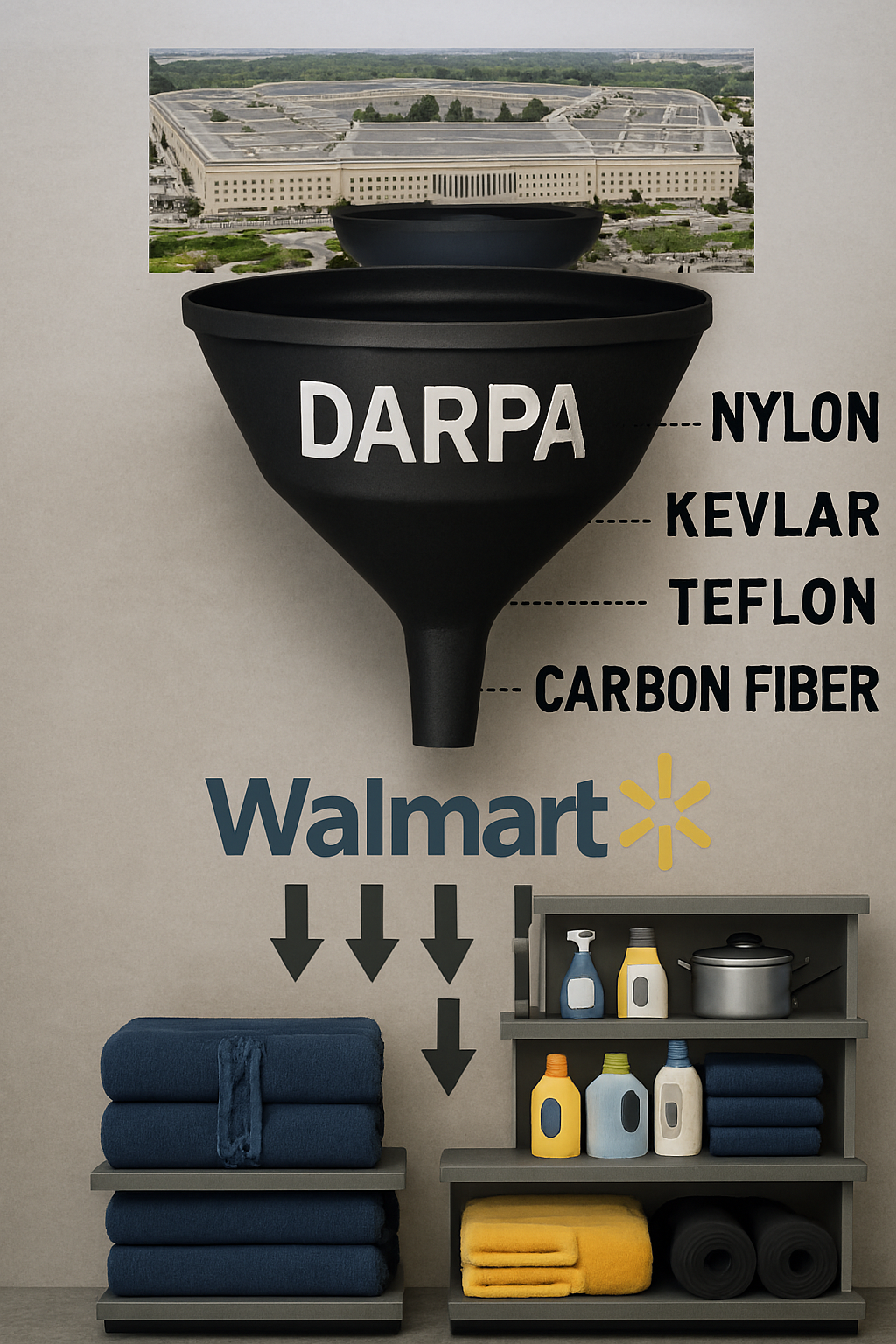The $8 Trillion Oil Insurance Policy - How the Pentagon Engineered Petrochemical Dominance
When Americans think of oil subsidies, they picture tax breaks for Exxon or loopholes for pipelines. What they don’t see is the biggest subsidy of all: the U.S. military.
Since 1970, U.S. taxpayers have spent an estimated $7–8 trillion militarily protecting oil supply chains, from the Strait of Hormuz to the deserts of Iraq. At the same time, the Department of Defense quietly became the petrochemical empire’s biggest R&D investor. From nylon to Kevlar, carbon fiber to Teflon, Pentagon-funded labs birthed the synthetic materials that filled American homes.
Meanwhile, hemp and bamboo, the two natural materials capable of replacing petrochemicals; weren’t just unfunded. They were outlawed.
Act I: The Navy as Oil’s Bodyguard
The Strait of Hormuz
Since the 1970s, the U.S. Navy’s Fifth Fleet has patrolled the Strait of Hormuz, the narrow channel through which nearly 20% of the world’s oil flows daily (CRS Report). Keeping that chokepoint open costs U.S. taxpayers $50–75 billion every year.
Iraq and Kuwait
The 1991 Gulf War and the 2003 invasion of Iraq weren’t just geopolitical maneuvers; they were infrastructure wars. Oil rigs, refineries, and pipelines were secured and rebuilt with U.S. military protection. The Costs of War Project at Brown University estimates total taxpayer costs for post-9/11 wars at $8 trillion, with energy security as a core driver (Brown University).
Vietnam and the South China Sea
The Vietnam War wasn’t just about communism. It was also about control of Southeast Asia and the South China Sea, now home to vast reserves of oil and gas. Today, China’s militarized islands in the Spratly chain sit atop strategic energy reserves. The same region the U.S. once fought to dominate (EIA Analysis).
👉 Every carrier group, every base, every war became part of a taxpayer-funded insurance policy for oil.
Act II: The Pentagon’s Petrochemical Laboratory
While the Navy kept oil flowing, the Department of Defense (DoD) became the petrochemical industry’s stealth R&D arm. Billions in taxpayer money funded the development of synthetic materials that migrated from the battlefield to the shopping mall:
Nylon (1930s–40s): Developed by DuPont for parachutes, ropes, and uniforms. Pentagon demand scaled the industry, then rebranded into consumer textiles (Smithsonian).
Teflon (1940s): Used in the Manhattan Project for gaskets and seals; later became the miracle of non-stick cookware (Chemistry World).
Kevlar (1965): Invented for military armor. By the 1980s, it was used in bike tires, gloves, and sporting goods (DuPont Archives).
Carbon Fiber (1960s–80s): Refined under aerospace and defense programs. Later migrated into golf clubs, cars, and consumer electronics (ScienceDirect).
DARPA Composites: Billions in Defense Advanced Research Projects Agency (DARPA) budgets funded resins, polymers, and advanced plastics… almost all petro-based (DARPA History).
👉 Every time the Pentagon needed a material, the petrochemical industry got a new market..
Act III: What Hemp and Bamboo Got
While oil was protected and petro R&D was supercharged, alternatives were handcuffed:
Hemp: Criminalized under the 1970 Controlled Substances Act and swept into the 1971 Toxic Substances Control Act. Treated like heroin and asbestos, not like a farm crop (CRS Report).
Bamboo: USDA cut fiber crop funding in 1962. Bamboo was treated as ornamental, not industrial; despite evidence it could replace timber and steel (USDA Historical Records).
Research Budgets: Zero DARPA programs, zero Pentagon contracts, zero R&D dollars for hemp or bamboo.
While petro got nylon and Kevlar, hemp got a narcotics label. While petro got DARPA grants, bamboo got nothing.
Act IV: The Hidden Subsidy
Add it up:
$7–8 Trillion: Military protection of oil since 1970 (Brown University, CRS).
Tens of Billions: Pentagon and DARPA R&D budgets fueling petro-derived synthetics.
Zero: Federal funding for hemp and bamboo industries.
This isn’t “free enterprise.” It’s a state-engineered monopoly.
Consumer Takeaway
Every paycheck you earned, every tax bill you paid, you weren’t just funding national defense. You were protecting oil tankers and inventing petro products:
Your non-stick pan? Military Teflon.
Your polyester shirt? Military nylon.
Your bike helmet? Military Kevlar.
Your golf club? Military carbon fiber.
Meanwhile, hemp was illegal and bamboo was ignored.
👉 The petrochemical empire wasn’t just protected. It was engineered.
Read the full story in the book.
Evolution Mine: The Industrial Evolution—the blueprint for breaking the petrochemical playbook and building a regenerative economy.
👉 Buy on Amazon





